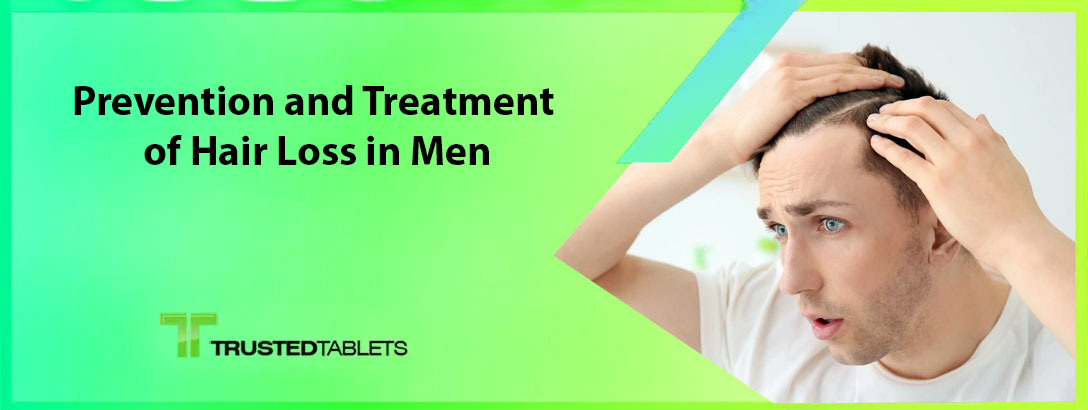Understanding Hair Loss in Men
Hair loss is a common concern for many men and can significantly impact self-esteem and quality of life. Understanding the causes, prevention strategies, and treatment options can help manage this condition effectively.
What Causes Hair Loss in Men?
Genetic Factors:
- Androgenetic Alopecia: Also known as male pattern baldness, this is the most common cause of hair loss. It is hereditary and involves the gradual thinning of hair due to genetic predisposition.
Hormonal Changes:
- Dihydrotestosterone (DHT): A derivative of testosterone, DHT is linked to hair loss by shrinking hair follicles and shortening the hair growth phase.
Medical Conditions:
- Thyroid Disorders: Imbalances in thyroid hormones can lead to hair thinning or loss.
- Autoimmune Diseases: Conditions like alopecia areata cause the immune system to attack hair follicles.
Lifestyle Factors:
- Stress: High levels of stress can contribute to temporary hair loss, known as telogen effluvium.
- Diet: Poor nutrition can lead to deficiencies that impact hair health.
Prevention Strategies for Hair Loss
Preventing hair loss involves addressing the underlying causes and adopting lifestyle changes that support healthy hair growth.
Maintain a Healthy Diet
Essential Nutrients:
- Protein: Hair is primarily made of protein, so adequate intake of lean meats, beans, and nuts is important.
- Vitamins: Vitamins such as A, C, D, and E, as well as B-complex vitamins like biotin, support hair health.
- Minerals: Iron, zinc, and selenium are crucial for maintaining hair growth.
Hydration: Drinking plenty of water helps maintain healthy hair and scalp.
Manage Stress
Stress Reduction Techniques:
- Exercise: Regular physical activity helps manage stress and promotes overall health.
- Relaxation Methods: Practices like meditation, yoga, and deep-breathing exercises can reduce stress levels.
Avoid Hair Damage
Gentle Hair Care:
- Avoid Excessive Heat: Limit the use of hair dryers and straighteners.
- Choose Mild Products: Use shampoos and conditioners suited for your hair type and avoid harsh chemicals.
Proper Hair Brushing: Brush hair gently to prevent breakage and damage.
Treatment Options for Hair Loss
There are various treatments available, ranging from medications to surgical procedures, depending on the cause and severity of hair loss.
Medications
Minoxidil:
- Usage: An over-the-counter topical treatment that can stimulate hair growth and slow hair loss.
- Effectiveness: Works best for those with androgenetic alopecia and may require continuous use to maintain results.
Finasteride:
- Usage: A prescription oral medication that reduces DHT levels, slowing hair loss and promoting regrowth.
- Effectiveness: Effective for many men with male pattern baldness, but may have side effects.
Hair Restoration Procedures
Hair Transplant Surgery:
- Follicular Unit Transplantation (FUT): Involves removing a strip of scalp with healthy hair follicles and transplanting them to thinning areas.
- Follicular Unit Extraction (FUE): This involves extracting individual hair follicles and implanting them into balding areas.
Laser Therapy:
- Low-Level Laser Therapy (LLLT): Uses lasers to stimulate hair follicles and promote hair growth. Non-invasive and can be used in conjunction with other treatments.
Natural Remedies
Essential Oils:
- Rosemary Oil: May help stimulate hair growth and improve scalp health.
- Peppermint Oil: Known for its potential to enhance blood circulation to the scalp.
Herbal Supplements:
- Saw Palmetto: Believed to block DHT and reduce hair loss.
- Ginseng: May help improve hair growth by stimulating hair follicles.
Managing Expectations and Ongoing Care
Realistic Goals: Hair restoration treatments can be effective, but results vary. It’s important to have realistic expectations about what can be achieved.
Ongoing Care:
- Regular Check-Ups: Routine visits to a dermatologist or trichologist can help monitor progress and adjust treatments as needed.
- Consistency: Adherence to prescribed treatments and lifestyle changes is crucial for maintaining results.
Table Summarizing Information
| Topic | Key Points |
|---|---|
| Causes of Hair Loss | Genetic factors (androgenetic alopecia), hormonal changes (DHT), medical conditions (thyroid disorders, autoimmune diseases), and lifestyle factors (stress, diet). |
| Prevention Strategies | Maintain a healthy diet (essential nutrients, hydration), manage stress (exercise, relaxation techniques), and avoid hair damage (gentle care, proper brushing). |
| Treatment Options | Medications (Minoxidil, Finasteride), hair restoration procedures (FUT, FUE, laser therapy), natural remedies (essential oils, herbal supplements). |
| Managing Expectations | Set realistic goals, and ongoing care (regular check-ups, consistency). |
FAQ
What is male pattern baldness?
Male pattern baldness, or androgenetic alopecia, is a hereditary condition characterized by the gradual hair thinning, typically starting at the hairline and crown.
How can I prevent hair loss through diet?
A diet rich in protein, vitamins (A, C, D, E, biotin), and minerals (iron, zinc, selenium) supports healthy hair growth. Staying hydrated is also important.
What are the side effects of Finasteride?
Common side effects of Finasteride may include decreased libido, erectile dysfunction, and mood changes. Consult with a healthcare provider for a comprehensive list of potential side effects.
How effective is Minoxidil for hair growth?
Minoxidil can effectively stimulate hair growth and slow hair loss, particularly in those with androgenetic alopecia. Results vary and may require continuous use.
What is the difference between FUT and FUE hair transplant methods?
FUT involves removing a strip of scalp with healthy follicles, while FUE involves extracting individual follicles. FUE is less invasive and leaves minimal scarring.
Can natural remedies help with hair loss?
Natural remedies like essential oils and herbal supplements may support hair health and growth, but they are generally less proven than medical treatments.
How long does it take to see results from hair loss treatments?
Results vary depending on the treatment and individual response. Medications may take several months, while hair restoration procedures may take up to a year to show full results.


